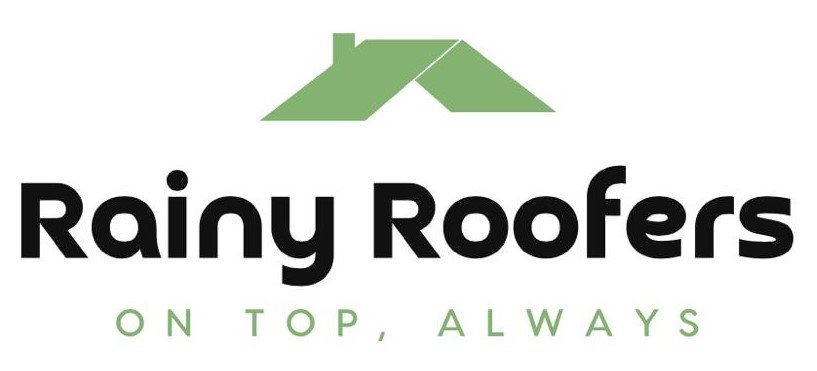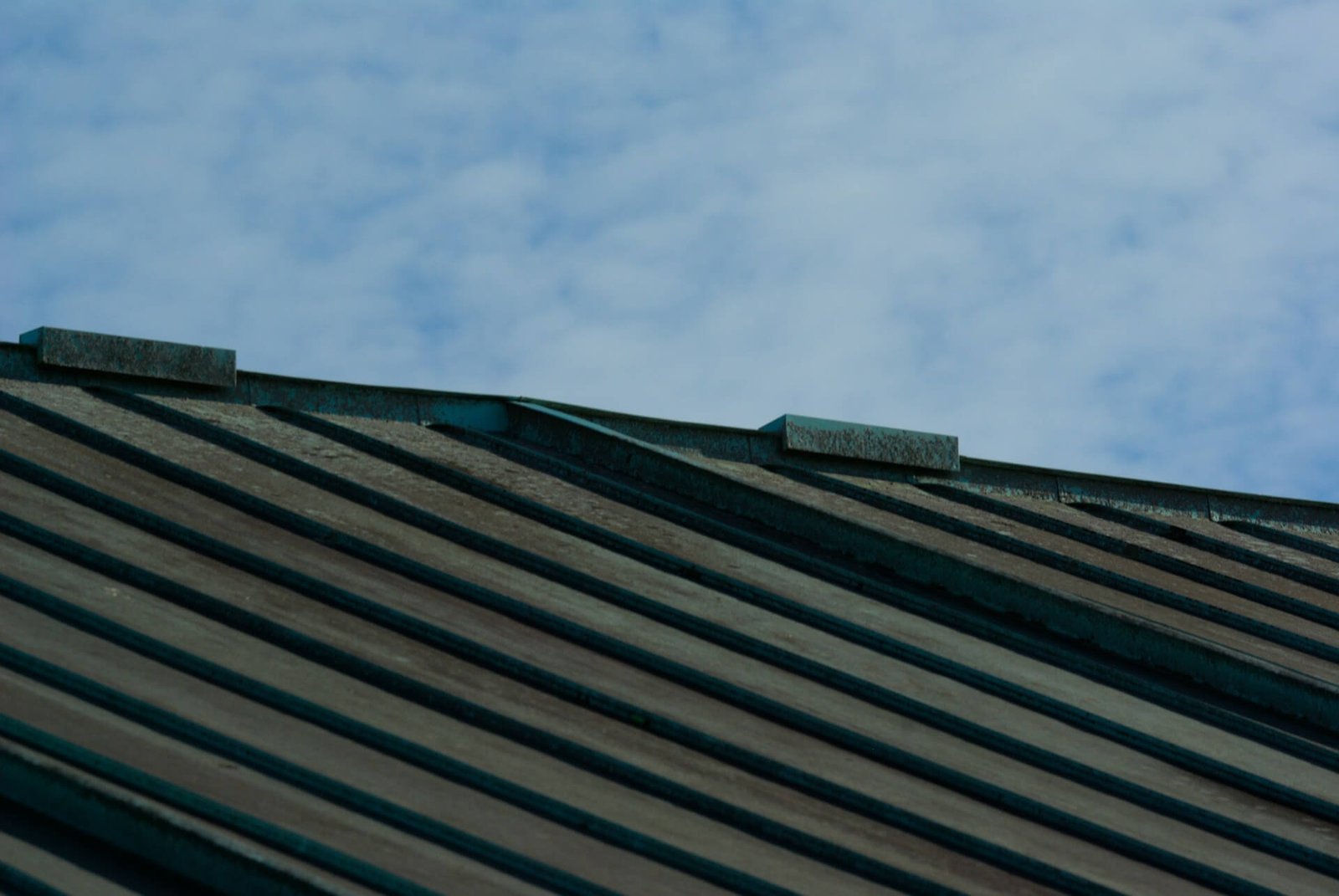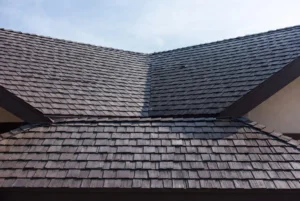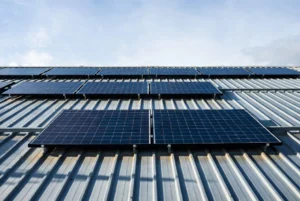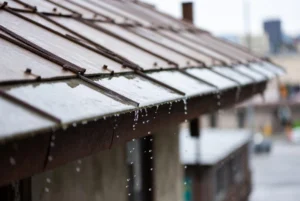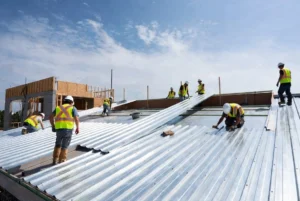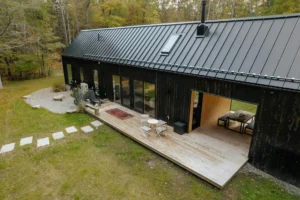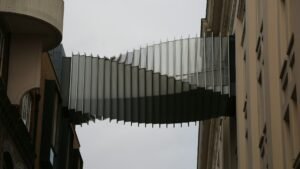I’ve installed hundreds of metal roofs over the past decade, and I can’t tell you how many times someone asks me about PBR roof panels after getting lost in all the technical jargon online.
Let me make this simple for you.
What Is a PBR Roof Panel (And Why Should You Care)?
Here’s the deal – PBR stands for Purlin Bearing Rib. Sounds fancy, but it just means these metal roofing panels have a special design that overlaps more than regular panels.
Think of it like this: when you stack two pieces of paper, there’s barely any connection. But when you fold one edge over the other and press them together, they’re locked in tight. That’s basically what a PBR panel does with your roof.
I remember this warehouse job we did last year in Ohio. The owner kept asking if we could use cheaper R-panels instead. I told him straight up – if you want something that’ll handle heavy snow loads and won’t leak when workers walk on it, PBR is what you need.
He went with PBR. Three winters later, zero problems.
How PBR Metal Panels Price Actually Works
Let’s talk about money because that’s what everyone really wants to know.
Here’s what affects your PBR metal panels price:
- Gauge thickness – 26 gauge is standard and cheapest, 24 and 22 gauge cost more but last longer
- Panel length – longer panels mean fewer seams but higher shipping costs
- Paint finish – basic colors run cheaper than specialty finishes
- Quantity – buying for a 2,000 sq ft roof costs less per panel than a small shed
I’ve seen prices range from $2.50 to $5.50 per square foot depending on these factors. Don’t let anyone tell you there’s one fixed price.
At Rainy Roofers, we’ve noticed customers usually land somewhere around $3.50-$4.00 per square foot for quality 26 gauge Galvalume substrate panels with a solid paint warranty.
Why PBR Panels Beat Other Metal Roofing Options
I’m not going to sugarcoat this – PBR panels aren’t perfect for every situation. But for agricultural buildings, commercial structures, and even residential projects, they’re hard to beat.
Here’s what makes them different:
Strength where it matters. That purlin bearing leg creates metal-to-metal contact that’s way stronger than standard exposed fastener panels. I’ve watched guys walk across PBR roofs during installation without any buckling or denting.
Weather protection. The overlap design keeps water and wind from sneaking through. We installed PBR panels on a chicken farm near the coast, and those panels have handled hurricane-force winds without a single leak.
Low maintenance. Once they’re up, they’re basically done. No shingle replacement every 15 years. No constant repairs.
Compare that to standing seam panels – sure, they look cleaner with hidden fasteners, but you’re paying double or triple the cost. For most commercial and agricultural applications, that extra cost doesn’t make sense.
The Real Specs That Matter for Your PBR Roof Panel
Forget the technical data sheets for a second. Here’s what actually matters when you’re choosing panels:
Coverage width is 36 inches. This means each panel covers 3 feet of your roof width. Makes calculating materials super easy.
Rib height is 1.25 inches. That’s the raised section that gives the panel its strength. Higher ribs mean stronger panels that span longer distances.
Minimum roof slope is 1/12. Translation: these work on nearly flat roofs. Most metal panels need steeper slopes, but PBR panels handle low-slope applications without issues.
Available in 22, 24, and 26 gauge steel. Thicker gauge (lower number) equals stronger panel. For most residential and light commercial work, 26 gauge does the job fine.
I had a customer last month who insisted on 22 gauge for his home. Honestly, it was overkill and added $1,800 to his project cost. Sometimes thicker isn’t better – it’s just more expensive.
Installation: What Makes PBR Panels Different
You can install PBR panels two ways – over open purlins or on a solid substrate like plywood.
For open framing (metal purlins or wood beams):
- Panels attach directly to the structural supports
- Faster installation
- Lower material costs
- Common in commercial and agricultural buildings
For solid substrate installation:
- Add roofing underlayment first (we use Sharkskin at Rainy Roofers)
- Better for residential applications
- Provides extra weatherproofing
- Required by most building codes for homes
One thing nobody tells you – always use bead mastic on the panel overlap for roofing applications. This sealant prevents water from wicking between the panels. Skipping this step to save $50 causes $5,000 in leak repairs later.
Colors and Coatings: Beyond Just Looks
The Galvalume substrate is your base layer – it’s basically steel coated with aluminum and zinc for corrosion resistance. Don’t skip this. Bare steel rusts fast.
On top of that, you’ve got paint options:
PVDF paint systems last 30+ years with minimal fading. They cost more upfront but hold their color in harsh sun and weather.
SMP paint systems are budget-friendly and work great for agricultural buildings where appearance matters less.
I’ve seen matte black and charcoal gray become super popular for modern residential projects. They look sharp and hide dirt better than lighter colors.
Common Mistakes People Make With PBR Metal Panels Price
Mistake #1: Comparing only material costs. Installation, trim, flashings, and underlayment add 40-60% to your total project cost. Get complete quotes.
Mistake #2: Going too cheap on gauge. Saving $300 now means replacing dented panels in 5 years. False economy.
Mistake #3: Forgetting about accessories. You need foam closures, proper fasteners, ridge caps, and trim pieces. These aren’t included in panel pricing.
Mistake #4: Ignoring warranties. A 40-year paint warranty versus a 10-year warranty tells you everything about quality.
At Rainy Roofers, we walk customers through the complete cost breakdown before starting any project. No surprises.
FAQ About PBR Roof Panels
How long do PBR panels last?
With proper installation and maintenance, 40-50 years minimum. I’ve seen panels from the 1980s still performing great on barns and warehouses.
Can you walk on PBR panels during installation?
Yes, but step on the flat sections between ribs, never on the raised ribs themselves. The trapezoid design distributes weight better than corrugated panels.
What’s the difference between PBR and R-panel?
The purlin bearing leg. PBR has a larger overlap that creates stronger connections and better weather resistance. R-panels work fine for walls but PBR is superior for roofing.
Do PBR panels work for residential homes?
Absolutely. They’re gaining popularity for modern farmhouse and industrial-style homes. The exposed fastener look isn’t for everyone, but the performance and cost make sense.
How much does a PBR metal roof cost installed?
Expect $6-$10 per square foot installed for residential projects, including materials, labor, underlayment, and trim. Commercial projects often run slightly less due to simpler roof designs.
The Bottom Line on PBR Roof Panels
Look, I’m not going to tell you PBR panels are perfect for every single roof. They’re not.
But if you need durable metal roofing that handles weather, lasts decades, and doesn’t destroy your budget, PBR panels deliver real value.
The exposed fasteners mean easier installation and repairs. The purlin bearing design provides genuine structural strength. And the price point makes sense for agricultural buildings, commercial structures, and cost-conscious residential projects.
At Rainy Roofers, we’ve installed enough PBR roofing to know what works. The customers who choose quality panels with proper installation never regret the investment.
Want to discuss PBR metal panels price for your specific project? We’ll give you straight answers without the sales pitch – just real numbers and honest recommendations based on your actual needs.
